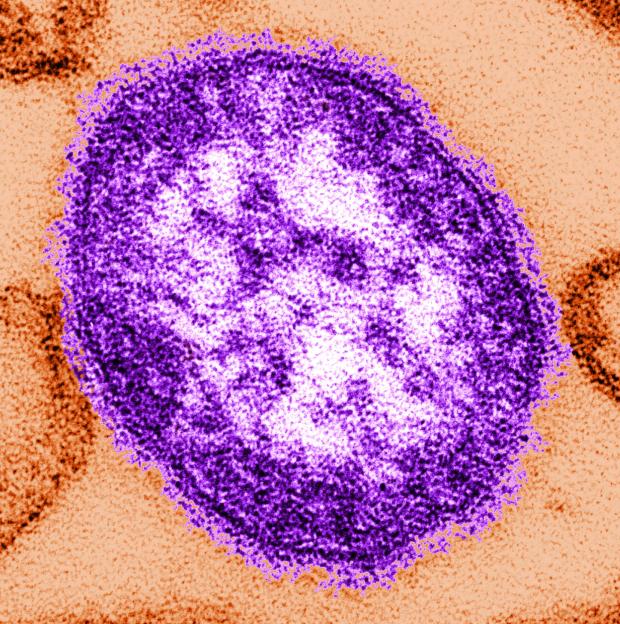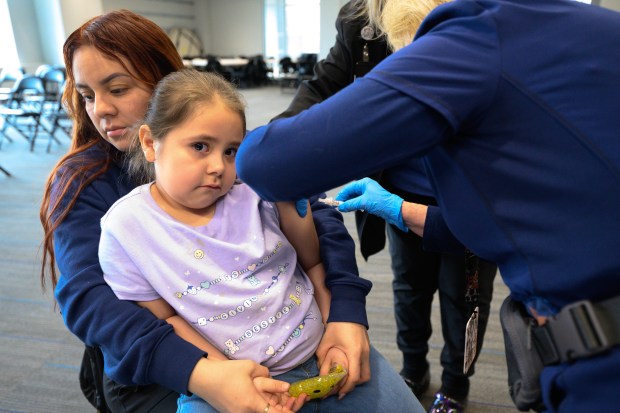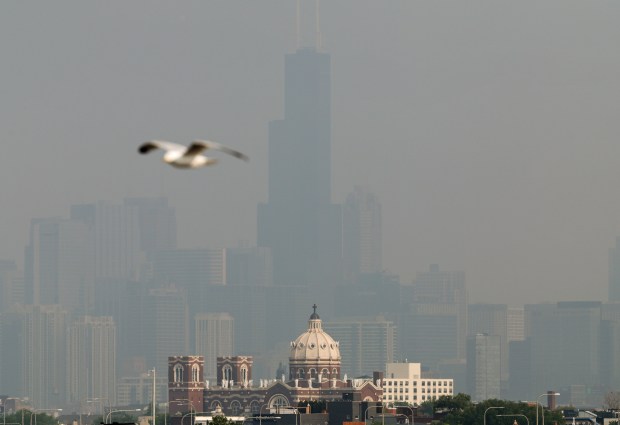Though Naperville-area schools across the board have high measles vaccination rates, local experts still urge the importance of immunization as outbreaks of the highly contagious respiratory disease crop up in other states.
“The more prepared we can be, the less concerned and less severe outcomes we would experience,” said Dr. Rashmi Chugh, medical officer with the DuPage County Health Department.
So far this year, the U.S. has had more than double the number of measles cases than it saw in all of 2024, with 712 reported cases as of April 10, according to the Centers for Disease Control and Prevention. Texas is reporting the majority of those cases, but outbreaks have also been reported in New Mexico, Kansas, Ohio and Oklahoma. Three people with measles in the U.S. have died this year. All three were unvaccinated.
Indiana health officials announced a measles outbreak Wednesday, while Michigan had its fourth confirmed case this week, per news reports. Illinois has not had any reported cases of measles yet this year.
With measles spreading across the country, the Illinois Department of Public Health has unveiled a new online tool that allows people to look up measles vaccination rates for schools throughout the state, from pre-kindergarten through 12th grade. The Measles Outbreak Simulator Dashboard, rolled out Wednesday, also uses school vaccination data from 2023-2024 to predict, project and estimate the size and spread of a measles outbreak at individual schools.
Illinois unveils online tool showing measles vaccination rates by school
Dashboard data reflects high immunization and low risk of outbreak in Naperville-area schools. Between Naperville School District 203 and Indian Prairie School District 204, most vaccination rates range from 96% to 99%.
When more than 95% of people in a community are vaccinated, most people are protected from infection through what’s called “herd immunity,” the CDC says.
Indian Prairie Health Services Coordinator Linda Herwaldt said in an emailed statement that the district is “committed to the health and safety of our students.” As of April 9, Indian Prairie had a 98.66% compliance rate for measles immunizations district-wide, she said.
“While recent measles outbreaks in other states have prompted renewed attention nationwide, our district has maintained a proactive approach to immunizations throughout the year,” she said.
Still, the district is “continuing our outreach to families — especially those who are new to the district — to support them in meeting immunization requirements and accessing local health resources,” Herwaldt said.
In March, the DuPage County Health Department put out a news release promoting vaccination.
According to IDPH data, 96% of DuPage-area school children were vaccinated against measles as of the 2023-24 school year. Over the past 10 years, that number has dipped slightly, down from 97.5% in the 2014-15 school year.
“We can take steps to protect ourselves, our families and those around us by being vaccinated,” Chugh said.
The best protection against measles is the measles, mumps and rubella (MMR) vaccine. The first shot is recommended for children between 12 and 15 months old and the second for those who are 4 and 6 years old. Two doses of the MMR vaccine are about 97% effective, according to the CDC. One dose is about 93% effective.
DuPage hasn’t had a case of measles since last year, when one county resident tested positive for the illness in April 2024. Before that, measles hadn’t been identified in DuPage since 2009, Chugh said.
Speaking to activity seen so far this year, she said, “We are certainly concerned that measles could be in Illinois and DuPage County any day.”
Jonathan Pinsky, medical director of infection control and prevention at Edward Hospital in Naperville, tied activity to travel.
“To me, it’s travel to areas of the world where there are measles actively in some countries and (it being) brought back to communities that have low vaccination rates,” he said. “And then it’s just the perfect storm for transmission.”
Like Chugh, Pinsky urged vaccination.

“Thinking about 97% (protection), what that means is … if there’s a measles exposure and 100 unvaccinated people in the same room develop measles, only three people would have developed measles if (the room) were fully vaccinated,” he said. “And with that being said, even if (someone who was vaccinated) were to get infected, it’s likely to be very mild … compared to somebody who is not.”
Common symptoms of measles, which generally appear seven to 14 days after coming into contact with the virus, can include high fever, runny nose, cough, sore throat and a rash, according to the CDC. More dangerous are the serious complications that can arise out of measles, including pneumonia and encephalitis (inflammation of the brain).
People can check their vaccination status by contacting their health care providers or looking at their medical records. Or they can use the Illinois Department of Public Health’s online portal, Vax Verify, to check their immunization status.
The Associated Press and the Chicago Tribune’s Lisa Schencker contributed.





